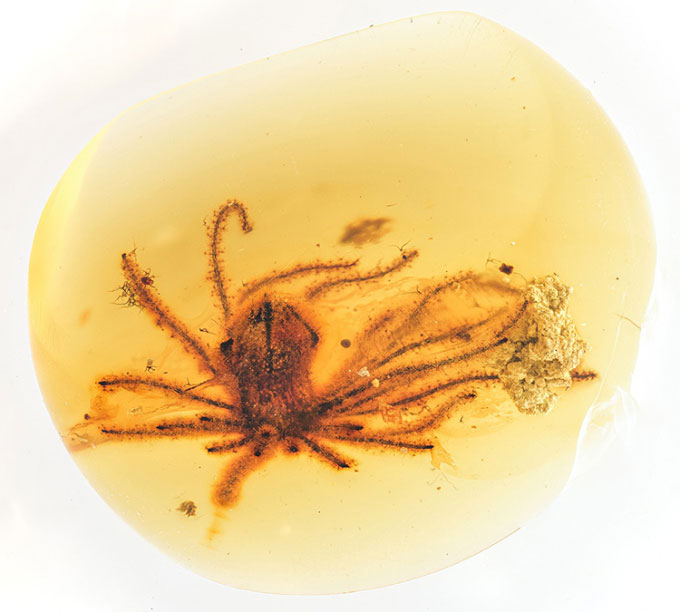Found a flower intact in 99 million years of amber
Paleontologists have discovered two extremely rare fossil flowers inside Cretaceous amber found under dinosaur footprints.
The discovery in Myanmar could shed light on how flowering plants evolved, an important part of the history of life but still a great mystery, the study's authors stressed in the post. in the journal Nature Plants on January 31.
Ancient flowers are not clearly described in the fossil record. They expanded and transformed into fruit, so very few specimens have been preserved to this day.
"Les are generally harder and more numerous than flowers, so they have a higher shelf life. A leaf is discarded 'as is' at the end of its shelf life, while a flower transforms into a fruit, which is thrift. eventually consumed or decayed as part of the seed dispersal process," study lead author Robert Spicer, Professor Emeritus in the Open University's School of Environmental, Earth and Ecological Sciences Brother, explain.

Cretaceous amber holds flower fossils of the species Eophylica pricatellata.
Two intact flowers in amber in Myanmar belong to two never-before-seen species of plants that lived during the Cretaceous period 99 million years ago. They have been named Eophylica pricatellata and Phylica piloburmensis, of which the latter species belongs to the same genus as the flower Phylica pubescens, which is native to present-day South Africa.
"These prehistoric specimens are almost identical to their modern relatives. There's really not much of a difference," Spicer added.
The genus Phylica has about 150 extant species, most of which are distributed in arid "flammable" regions of South Africa. The team suggests that fires must have been a regular event over a long period of time for evolution to shape flowers into shapes that can withstand fire and produce seeds that can find their way into the surface. burned ground. In the case of Phylica, their flowers are protected by leaves clustered at the tops of the branches.

South African species Phylica pubescens, in the same genus as Phylica piloburmensis.
The evolution and spread of flowering plants is thought to have played an important role in shaping much of life as we know it today. It gives diversity to insects, amphibians, mammals and birds.
"Flowering plants reproduce more quickly than other groups of plants thanks to complex propagation mechanisms. Flowers are often closely associated with pollinators. This promotes mutual growth coefficients of many plant lines and animals, helping to shape the ecosystem," Spicer emphasized.
- The flower is 100 million years old as freshly picked in amber
- Discover intact marine life in amber 99 million years
- Discovered the dead body stuck in amber 99 million years
- The discovery of gecko fossils lies in amber dating from nearly 100 million years
- The most intact bird fossil in amber 99 million years
- The dinosaur tails remain intact in the amber mass of 99 million years
- Amazingly discovered about the 100 million-year-old bird in amber
- Found samples of amber weighing more than 2kg in Kaliningrad
- Fossilized pig mold in amber 30 million years
- Found amber fur dinosaur, ancient lice 99 million years old
- India discovered amber plates dating back 50 million years
- The oldest spider web in the world
 Discovered an ancient centipede fossil 99 million years old
Discovered an ancient centipede fossil 99 million years old Discovered bat-like dinosaurs in China
Discovered bat-like dinosaurs in China Discovered a 200-year-old bronze cannon of the coast
Discovered a 200-year-old bronze cannon of the coast Discover 305 million-year-old spider fossils
Discover 305 million-year-old spider fossils